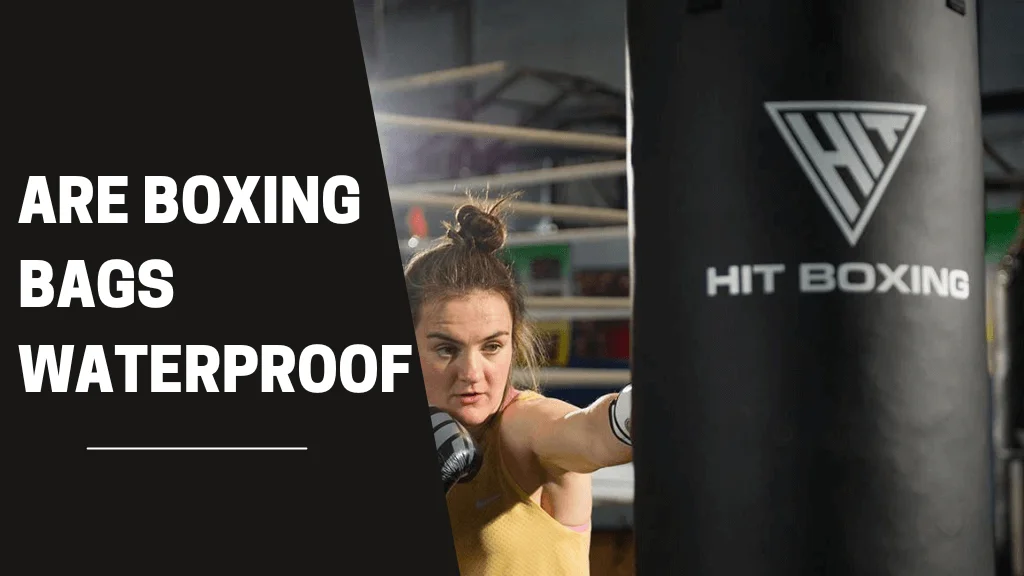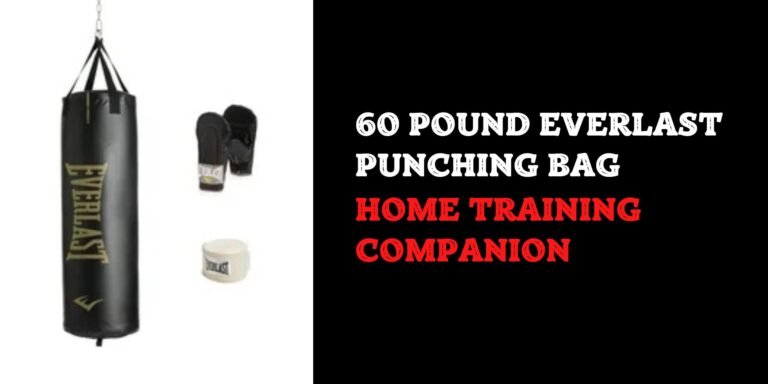Boxing bags stand as a fundamental element in every boxer’s training routine, boasting a diverse array of shapes, sizes, and materials. They have been an essential training tool for decades, evolving in design to meet the needs of both professional fighters and fitness enthusiasts. Amidst the considerations for these indispensable tools, a pivotal aspect often flies under the radar – their resistance to water. In the following detailed exploration, we delve deep into the intricacies of waterproof boxing bags, shedding light on their advantages, limitations, and how to select the perfect one tailored to your specific training requirements. By understanding these details, you can ensure you are investing in equipment that will remain reliable for years to come.
What is a Boxing Bag
At the heart of every fighter’s training repertoire lies the boxing bag, a formidable piece of equipment intricately crafted to withstand the relentless onslaught of punches and kicks. This robust apparatus serves as the linchpin in the pursuit of refining striking techniques, building strength, improving stamina, and achieving comprehensive fitness goals. For a boxer, the bag is not merely an inanimate object it is a training partner. It absorbs the force, rhythm, and intensity of every strike, becoming a silent witness to hours of sweat, dedication, and improvement. Whether you are a beginner practicing your first jab or a seasoned fighter working on power combinations, the boxing bag remains an irreplaceable tool in developing precision, endurance, and explosive strength.
Importance of Waterproofing in Boxing Bags
The significance of waterproofing in boxing bags cannot be overstated, especially for individuals who train outdoors or have limited indoor space. For many athletes, training is not restricted to the four walls of a gym; it often extends to garages, backyards, open fields, or outdoor training setups. In such scenarios, exposure to weather elements is inevitable. Without proper waterproofing, a boxing bag is at risk of material breakdown, mold formation, and reduced performance.
Waterproofing is more than a protective feature; it is an investment in the longevity of your equipment. It safeguards the structural integrity of the boxing bag, fortifying it against the detrimental effects of moisture, humidity, and even sudden weather changes. A waterproof bag will continue to perform consistently in all conditions, whether you are training under a drizzle, in humid climates, or simply in areas prone to accidental spills.
Types of Boxing Bags
Boxing bags are not a one-size-fits-all piece of equipment. Their variations in size, shape, and purpose cater to the specific needs of different training regimens. Understanding these distinctions ensures you choose the right bag that aligns with your boxing goals.
Heavy bags remain the most recognized type, designed to handle the power of strong, repetitive strikes. They are typically cylindrical, weigh between 70–150 pounds, and are used to develop punching power, improve muscular endurance, and enhance overall body strength. The materials vary, from leather for a traditional feel to synthetic options that offer better moisture resistance.
Speed bags, in contrast, are all about rhythm, timing, and hand-eye coordination. Their small, air-filled design requires constant, rapid punches to keep them moving, helping fighters sharpen reflexes and maintain upper-body agility. In outdoor settings, having a waterproof speed bag ensures that sudden rain or environmental moisture doesn’t affect its bounce or surface condition.
Double-end bags present yet another style, suspended at both the top and bottom to create unpredictable movement. They simulate the movement of an opponent, forcing the boxer to adjust strikes with precision. Waterproofing in double-end bags is crucial to ensure that the elastic cords, seams, and surface remain strong over time.
Factors to Consider When Choosing a Waterproof Boxing Bag
The choice of a waterproof boxing bag goes beyond brand preference—it involves assessing material quality, purpose, and intended environment. Leather, for example, offers a premium feel and durability but requires consistent treatment to maintain waterproofing. Synthetic leather provides an easier maintenance option at a lower cost, while canvas offers flexibility for various uses but demands thorough waterproofing to avoid water absorption.
Purpose plays an equally important role. Heavy hitters will need a sturdier, denser bag with reinforced waterproof layers, while speed trainers require a lightweight option that retains its responsiveness. Additionally, deciding between indoor and outdoor use will affect your choice—indoor users may not need extreme waterproofing but will still benefit from the protection against sweat and cleaning moisture, whereas outdoor users should prioritize full weather resistance.
Benefits of Waterproof Boxing Bags
The durability of waterproof boxing bags is unmatched compared to standard versions. A good waterproof layer acts like armor, preventing water penetration that could weaken stitching, compromise padding, or damage the outer shell. This leads to a longer-lasting bag that remains functional and safe for extended training cycles.
Maintenance becomes much simpler. Cleaning a waterproof bag often requires nothing more than a quick wipe-down, as water and dirt don’t easily penetrate the surface. This not only saves time but also reduces the chances of bacteria or mold buildup, which can be a serious concern with non-waterproof alternatives.
Weather resistance is another strong advantage. Whether you are training in hot, humid climates or facing seasonal rains, a waterproof boxing bag will remain stable, with its structural integrity intact. This resilience ensures that your training routine remains uninterrupted, regardless of the conditions.
Drawbacks of Non-Waterproof Boxing Bags
Non-waterproof boxing bags, while sometimes more affordable initially, often lead to higher long-term costs. Constant exposure to moisture can cause wear and tear at a much faster rate. Materials become softer, stitching loosens, and padding shifts, all of which can negatively affect performance.
Another significant issue is mold and mildew. These not only produce unpleasant odors but can also cause health issues if spores are inhaled over time. In humid environments or outdoor setups, mold can appear surprisingly quickly, leaving the bag unsafe and unappealing to use.
The limitations for outdoor training are perhaps the biggest drawback. Without waterproofing, your bag may only last a fraction of the time compared to a waterproof model, forcing you to either replace it frequently or restrict training to indoor environments.
Popular Waterproofing Methods for Boxing Bags
Manufacturers today use several advanced methods to ensure their boxing bags remain resistant to water. One common approach is the use of water-resistant materials like high-grade synthetic leather, which naturally repels moisture. Some brands also apply specialized external coatings, such as hydrophobic sprays, to create a barrier that forces water to bead and slide off rather than soak in.
Sealed seams are another crucial feature. Welding or reinforced stitching prevents water from seeping in through the joins, which are often the weakest points in a bag’s construction. When combined with a quality outer layer, sealed seams can greatly extend the life of the bag in damp or wet environments.
Maintenance Tips for Waterproof Boxing Bags
To get the most out of your waterproof boxing bag, regular cleaning is essential. Using mild soap and a soft cloth will remove dirt without compromising the waterproof layer. It is equally important to ensure the bag is completely dry before storage, even if the exterior seems dry to the touch.
Storage should always be in a cool, dry area away from direct sunlight. Heat and UV rays can weaken materials over time, even in waterproof models. If space allows, hanging the bag in a covered outdoor area can also work, provided it’s shielded from direct rain or snow.
Routine inspections are invaluable. Small tears, seam openings, or worn patches can be repaired quickly before they compromise waterproofing. Simple fixes, like patch kits or reapplication of waterproof spray, can restore the protective barrier and prevent expensive replacements.
Conclusion
Choosing a waterproof boxing bag is about more than just avoiding water damage—it is about investing in durability, performance, and long-term training convenience. Whether your sessions take place in a professional gym, a home setup, or an open-air environment, a waterproof bag ensures your training never has to pause because of the weather. With proper care and mindful maintenance, it can serve as a reliable training partner for years.
FAQs
Can I use a waterproof boxing bag outdoors?
Absolutely. In fact, waterproof boxing bags are specifically designed to withstand various outdoor conditions, allowing you to train in different environments without concern.
How often should I clean my waterproof boxing bag?
Cleaning frequency depends on usage, but a general recommendation is every two to three weeks or whenever you notice visible dirt or sweat buildup.
Are there budget-friendly waterproof boxing bags?
Yes. Many reputable brands offer affordable models that incorporate quality waterproofing features, making them suitable for beginners and advanced users alike.
Related Post:




